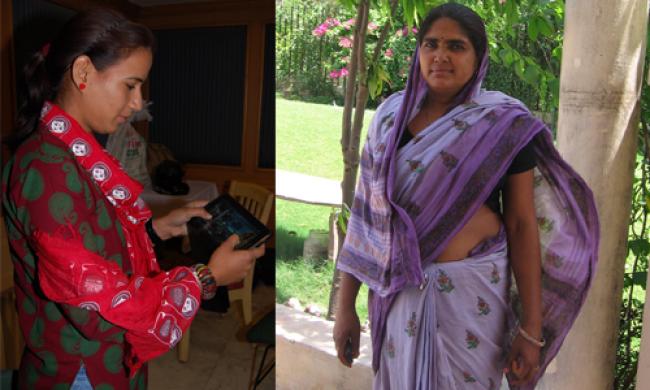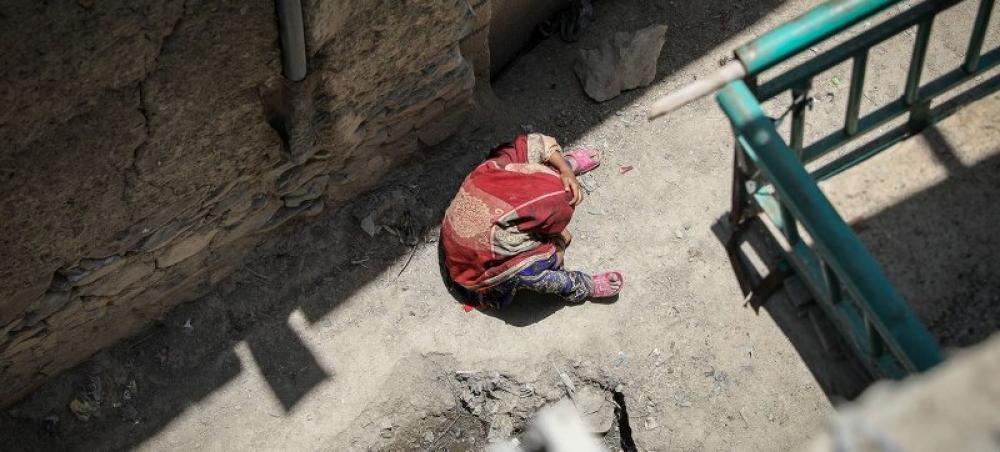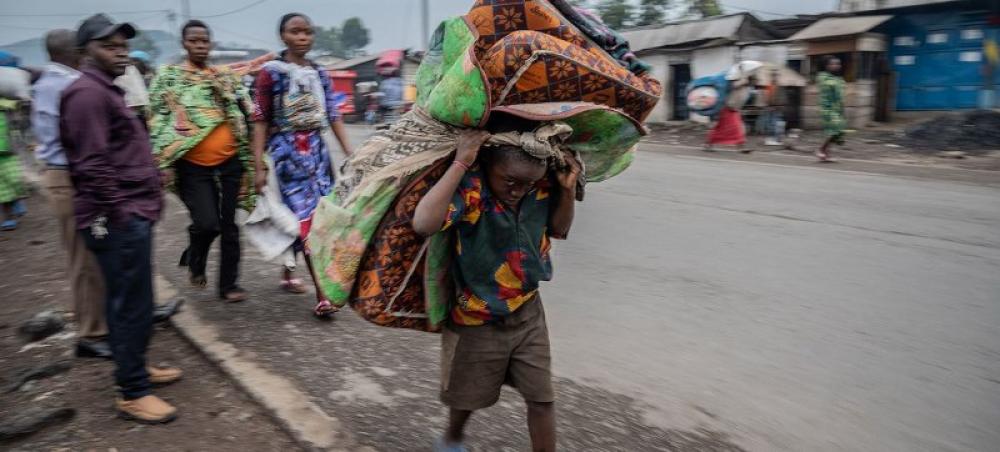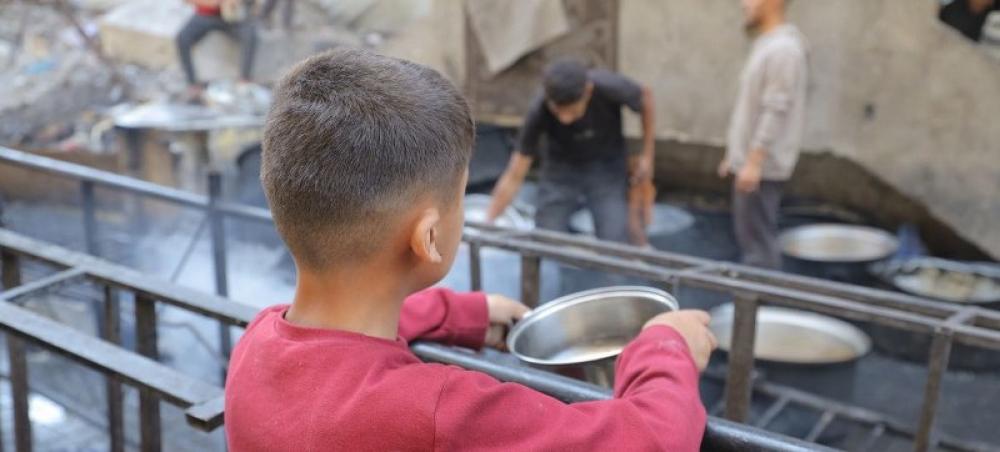30 Sep 2013, 05:11 pm Print

There is an Indian saying that walls have ears. In Rajasthan’s Vijaypura panchayat, walls literally talk.
The talking walls of Vijaypura have not only come to symbolise the small yet steady strides Rajasthan’s rural women have taken in the patriarchal society but also their struggles to bring transformation in the rural landscape and mindset.
Rukmini Devi Salvi, 37, sarpanch of Vijaypura panchayat in Rajsamand district, is a woman on a mission. Hailing from the Salvi (SC) weaver community, Rukmini won her elections in 2010 from an open seat solely on merit, despite some influential candidates spending loads of money to misguide voters. What weighed in her favour was her dogged insistence on transparency in all panchayat dealings.
Learning from her husband and former sarpanch Kalu Ram Salvi, Rukmini has made it mandatory to make all information related to panchayat office public. This she does by writing all information related to panchayat work, including accounts, not only on its office walls but on all public places like community centre building, Anganwadi walls, schools and health care centres. First the walls are painted in yellow and then information is written in black or green colour.
Rukmini says that information about various government schemes, daily work of Panchayat office, muster rolls, vouchers, Right to Information Act, information Mahatma Gandhi National Rural Employment Guarantee Act, and even panchayat balance sheets are written on the walls to be shared with the public, so that common man knows what exactly is going on for the development of the village. “This way people know that the village revenues are in safe hands and not going into anybody’s pocket as is the case in most places,” she adds.
Rukmini is a leader of nine villages and takes decisions for almost 10,000 villagers. Besides the usual development of villages, her sharing information simply through a wall in this e-age, is remarkable.
Unlike her, Rakhi Paliwal , ‘upsarpanch’ (deputy village head) of Upli Oden of Rajsamand district, believes in the power of the social networking sites in these e-times.
All of 23, Rakhi has a Facebook page of her panchayat and posts its problems on it and invites direct intervention from villagers and concerned officials. Says Rakhi: "Many a times, even the district collector has immediately responded to my queries on Facebook and directed me to the concerned department. I have requested all villagers to share their complaints, which I post on FB, so that the authorities notice."
A first year law student of Udaipur’s DN Law College and daughter of a former panchayat leader, Rakhi spends the first half of her day at the college, 50 km away but in the afternoon, she logs on to her panchayat work.
With the dream of turning her village into model one, she has been working against open defecation. Rakhi now wants to get the collapsed wall of the girls’ school repaired. Having put up the picture FB in March, she is yet to receive funds for it. Sometimes the FB tool also does not seem to work. Says Rakhi, “Social media alone does not help. Physical perseverance is equally necessary.”
Using a smartphone to update her village status on FB, Rakhi is a perfect example of digital intervention that is taking place at the grassroots levels here.
Not just IT-rooted, even illiterate women panchayat leaders of Rajasthan are surprising foreign teams, who are forced to take a second look at the strength of India’s grassroots democracy. Like Murli Meena, sarpanch of Dehlala Gram Panchayat in Chaksu tehsil.
A sarpanch in her third term now, Murli has impressed a group of bankers from Australia with developmental work in her village, so much so that she got invited by the Commonwealth Bank of Australia to lecture their staff about grassroots democracy and leadership. Murli is just back from a 15-day trip of six Australian cities like Sydney, Perth, Melbourne etc.
“The Australians were curious to know how I pursue the developmental work in villages with the money sanctioned and how does our democracy work,” Murli said .
Meena has managed to get 295 women registered under the government's Indira Aawas Yojna and pension for 150 village elders and hand pumps installed in the village.
In another panchayat, Oda in Rajsamand district, Vardhani Purohit, in her thirties, had the guts to impose a tax on tractors taking away small stone chips (bajri) used in construction of buildings.
Her firm action was unheard of till then and the bajri lobby ganged up against her and got the levied tax rolled back.
As Vardhani says : “I ran from pillar to post to get at least some revenue from such huge quantities of bajri being taken away from our region. I imposed a Rs 200 to Rs 500 royalty on the tractors, so that the revenue earned can be used for village development.” But the bajri lobby is unwilling to pay even such a paltry sum. Political pressure, bajri lobby, and scared officers, forced the rolling back of the revenue. “Nonetheless, I am a fighter and will fight till the end,” she affirms.
Today, Rakhi, Murli, Rukmini, Vardhini and many like them are the face of women empowerment in rural Rajasthan. That Rajasthan has 50 per cent reservation for women in local government bodies, which was first implemented in 2010, has helped immensely.
The change such a quota brought about was not instant. It took some years as Rajasthan has a conservative mindset still where women are not allowed to venture out of houses, let alone enter governance.
But with many agencies and NGOs working with women at the grassroots to increase awareness about participation in local bodies, young candidates have started shedding their inhibitions.
Observes Virendra Shrimali, convenor of Hunger Project which works in this field, "Initially, we would have to request elderly women to fight the elections. Now with greater awareness, the scenario has changed significantly. It is not unusual to find anywhere between five to ten women candidates contesting for one panchayat seat. In a sense, women have realised that they have an advantage. Where men can contest in only 50 per cent of the seats, women can contest all of them."
So these NGOs keep working relentlessly in these backward areas in the hope that what can be achieved in one panchayat can also be carried out in the 9,189 panchayats of Rajasthan.
- New study shows one in three Australian men committed intimate partner violence
- Funding cuts in Afghanistan mean ‘lives lost and lives less lived’
- UN report says Iran using app, tech to monitor women who are not wearing hijab
- Women's rights advocates warn UN to confront backlash against progress
- UN condemns Taliban ban on women attending medical classes in Afghanistan






